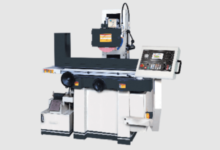Variance Analysis Methods That Help Growing Businesses Spot Financial Red Flags Early

For growing businesses, financial surprises can be the difference between scaling successfully and stalling out. Cash shortfalls, overspending, or missed revenue targets often don’t happen overnight; they build up gradually. The key is spotting those signals early, and one of the most effective tools for doing so is variance analysis.
By comparing actual performance against budgets or forecasts, variance analysis reveals where reality diverges from expectations. It highlights inefficiencies, identifies red flags, and helps leaders adjust strategy before problems escalate.
In this article, we’ll break down the variance analysis methods that growing businesses can use to strengthen oversight, improve decision-making, and stay ahead of financial risks.
Why Variance Analysis Matters for Growing Businesses
Growth brings complexity. As revenue expands, so do expenses, investments, and operational risks. Without a systematic way to track whether results align with plans, small discrepancies can snowball into major financial issues. A PwC study highlights that liquidity contraction in repo markets, driven by falling balances in repo and other bank funding markets, has significantly reduced liquidity provision by market makers across capital markets.
Effective variance analysis helps businesses:
- Detect budget overruns and revenue shortfalls early.
- Understand whether issues stem from pricing, volume, or efficiency.
- Improve accountability by linking financial outcomes to operational actions.
- Strengthen forecasting accuracy over time.
- Build investor and lender confidence with disciplined financial management.
This discipline is especially critical in today’s financial climate. For growing businesses, this means reduced access to funding buffers and greater exposure to shocks. Variance analysis serves as an early-warning system, helping leaders spot red flags in time to adapt and protect their financial position.
Key Variance Analysis Methods
Growing businesses can apply several types of variance analysis to gain a complete picture of their financial health. Each method focuses on a different angle of performance.
1. Budget vs. Actual Variance
- What It Is: Compares actual financial results to the original budget.
- Why It Matters: Highlights where the business is overspending or underperforming relative to planned goals.
- Use Case: A marketing campaign costing 25% more than budget signals a need to revisit assumptions or negotiate vendor rates.
2. Forecast vs. Actual Variance
- What It Is: Measures differences between updated forecasts and real results.
- Why It Matters: More agile than budget comparisons, as forecasts evolve with market conditions.
- Use Case: Sales forecasts predict $1.2M in revenue for Q3, but actuals come in at $1.05M. Variance analysis points to slowed customer acquisition, prompting adjustments in sales strategy.
3. Volume and Price Variance
- What It Is: Breaks down variances into changes caused by sales volume versus price changes.
- Why It Matters: Separates whether issues stem from fewer units sold or discounts cutting into margins.
- Use Case: A restaurant sees revenue drop despite stable customer counts, revealing discounting practices as the culprit.
4. Cost Variance (Labor, Materials, Overhead)
- What It Is: Analyzes whether actual costs per unit differ from expected costs.
- Why It Matters: Pinpoints operational inefficiencies, like higher labor hours or rising input costs.
- Use Case: A manufacturer finds that material costs exceeded standards due to supply chain price increases, triggering renegotiations with suppliers.
5. Operating Margin Variance
- What It Is: Compares actual vs. expected operating margins.
- Why It Matters: Reveals whether profitability is driven by revenue growth or cost control.
- Use Case: A SaaS business hitting revenue targets but missing margin goals uncovers inflated customer acquisition costs.
How to Use Variance Analysis Effectively
Simply calculating variances isn’t enough, businesses need a structured approach to make them actionable:
- Set Materiality Thresholds: Don’t chase every tiny fluctuation. Focus on variances that exceed a meaningful threshold (e.g., >5%).
- Investigate Root Causes: Go beyond numbers to ask “why.” Engage department heads to uncover operational drivers.
- Link to Decision-Making: Use insights to adjust budgets, refine forecasts, or reallocate resources.
- Visualize Results: Variance bridges and dashboards make it easier to communicate insights across teams.
- Close the Loop: Feed lessons back into planning to improve future accuracy.
Common Challenges in Variance Analysis
While powerful, variance analysis isn’t without its challenges. Growing businesses often face hurdles such as:
- Data Silos: When finance, sales, and operations don’t share data, root cause analysis becomes fragmented.
- Overcomplication: Too many metrics or overly complex models can overwhelm decision-makers.
- Reactive Use: Treating variance analysis as a backward-looking exercise instead of a proactive planning tool.
- Lack of Accountability: Without clear ownership, variances get explained but not corrected.
Adopting simple frameworks, automation, and strong cross-team collaboration can help overcome these issues.
Best Practices for Growing Businesses
To maximize the value of variance analysis:
- Automate data collection to reduce manual work.
- Standardize formulas and reporting across teams.
- Focus on variances that materially impact strategy or margins.
- Involve cross-functional leaders in root cause reviews.
- Combine financial and operational data for context.
By embedding these practices, businesses can turn variance analysis into a forward-looking performance management tool rather than just a reporting exercise.
Final Words
For growing businesses, variance analysis is more than a financial exercise; it’s a safety net. By comparing budgets, forecasts, and actuals, companies can spot red flags before they spiral into crises.
The most effective approach combines multiple variance methods, budget, forecast, price, cost, and margin, with strong best practices like root cause investigation and continuous improvement.
By embracing disciplined variance analysis, finance leaders not only prevent financial missteps but also equip their businesses with the agility needed to grow confidently in today’s unpredictable environment.







